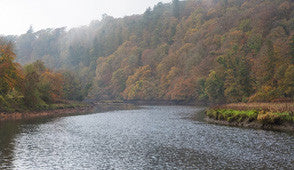
A Cup of Tea With Our Customers
We sit down with a customer who run a local tearoom, café / venue that serves our tea. We are always keen to promote the beautiful places around our county.
This time we’re at Lopwell Dam talking to Jayne from The Old Pump House.
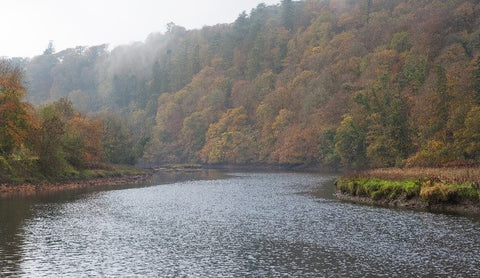
Where are we? The Old Pump House at Lopwell Dam
How long has the business been here? Four and a half years
What sort of things do you serve? We do breakfasts, light lunches (sandwiches, jackets, pain is etc), soups, gourmet burgers. Homemade cakes, flapjacks and scones. We try and locally source as much a possible and make as much as possible. We make all our cakes, scones etc. We also make our own soups, chilli, quiches and we even make our own chutneys for the ploughmans etc. We have a collection of vintage China which we can do beautiful, afternoon teas with( pre booking req) We also have a Friday night supper where we do a themed supper, outdoors on the beautiful terrace if we can
What's your favourite thing about working here? The view is simply amazing! No one else I know has a view like that when they are at work. I'm lucky, I do a job I love in an amazing place with lovely customers!
What’s the most popular item on your menu? Our homemade cakes and cream teas
Where is your favourite place in Plymouth? I would have to say Plymouth Hoe. Perfect place for a stroll.
Where is your favourite place in the Southwest? I love Saunton Sands beach. Huge long beach, golden sands and never really packed!
What's your favourite drink? Non-alcoholic, has to be a cup of tea, I drink gallons, mostly cold! But alcoholic has to be a very cold New Zealand Sauvignon Blanc.
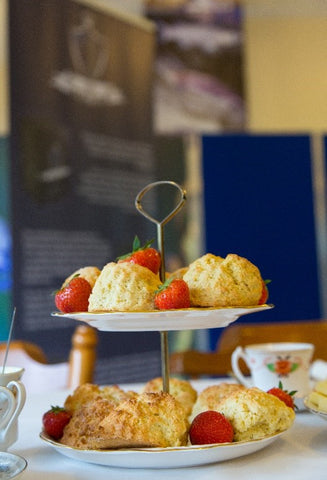
Sweet or Savoury scone? Tough one as a we do a cream tea and a cheese tea (cheese scones, wedge of cheddar and pot of chutney). and I love that when they are just out the oven. But I would say a cream tea just tips it. Although I do quite often have one of each scone!
Jam or cream first? Cream every time.
How do you have your tea? Strong, tiny splash of milk, no sugar.
Any information for anyone who wants to visit you? Currently open 7 days a week from Easter 01752 695978 - final bit of info.....don't follow satnav! It will lead you astray
https://www.facebook.com/The-Old-Pump-House-167655993303923
Twitter @lopwelldam
- Carl Coysh
- Tags: Cream Tea Pump House Plymouth Tea Blog Tea News
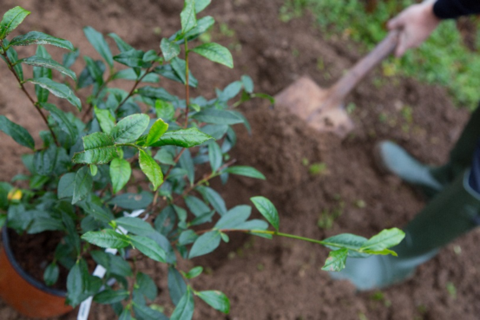
The Story of Devon’s First Tea Plantation
Of all the things I might have imagined I would be able to put on my CV, Tea Plantation Manager certainly wasn’t one of them! For the last 7 years, I’ve been running a community project at the Walled Gardens at Maristow. It’s a Victorian Walled Kitchen Garden on the banks of the River Tavy that fell into disrepair. I’ve run projects here with long term unemployed young people, offenders and ex-offenders, mental health charities and college groups, all aimed at restoring the gardens back to full productivity and using the restoration process as a vehicle for therapeutic activities.

Jenny Tunley-Price with the first tea plants in the Walled Gardens at Maristow(Photo courtesy of Martin Hesp)
Slowly but surely, we’ve reclaimed ground, started to repair buildings and greenhouses, and have been growing all sorts of edible crops.
We sell most of our produce through Tamar Grow Local CIC, a social enterprise set up to reinvigorate market growing in the Tamar Valley, which used to be one of the primary market garden regions in the UK with produce being packed off on trains to reach the early morning markets in cities as far away as London and Manchester.
Tamar Grow Local CIC also support fantastic community growing projects such as helping communities set up allotment sites, community orchards and a beekeeping cooperative. (You can find out more about TGL here http://www.tamargrowlocal.org/ ).
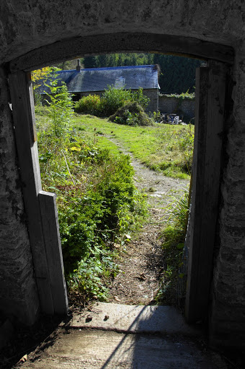
It was through TGL that I first met the owners of Plymouth Tea . They asked if it might be possible to grow tea in Devon and, without knowing too much about it, I blithely said I didn’t see why we couldn’t give it a go...all we needed to do was buy some plants, give them approximately the conditions they would expect in their native situation and that shouldn’t be too difficult. I’d heard someone in Cornwall was growing it, so why not in West Devon? After all, tea comes from Camellias which do well in our damp and acid conditions, so why not? Our position here on the banks of the river Tavy should be about as ideal as is possible in the UK. In the major tea producing regions of the world, tea is grown in river valleys where the air is moister.
Well, it appears that there are Camellias and then there are Camellias….
You know Camellias – the dark evergreen bushes that produce flowers in Spring that look as if they’ve been carefully crafted out of tissue paper? They are all varieties of Camellia japonica, in other words, the Japanese Camellia, and the flowers are often as big as a tea cup in colours ranging from white through pink to red. Devon and Cornwall are strewn with them as they do well in our climate and there are hundreds of varieties.
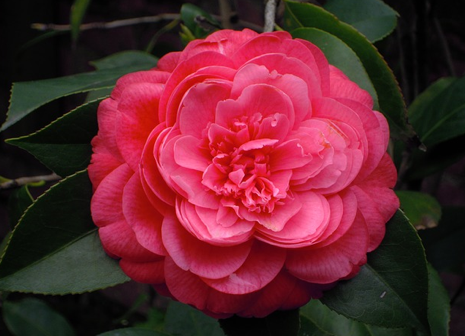
Camelia japonica
Tea comes from Camellia sinensis, in other words, the Chinese Camellia, which is much less widely known and, as it turned out, much harder to find. I started trying to source 1000 plants about 2 years ago and at every turn, drew a blank. We’d almost given up hope when the lovely Phil Rusted from http://www.practical-plants.co.uk/ got in touch. He’d found 250 plants for us…much excitement in the office ensued!

So, we finally took delivery of the plants in September. They came in a huge wagon that struggled to get down the narrow lanes and certainly wasn’t going to make it up the steep drive to the gardens. We unloaded them down by the river and transported them up the drive in my battered little car (known locally as ‘The Compost Heap’) bootful by bootful. We were delighted to find that some of the pots contained 3 plants, meaning we had enough to plant out almost the whole of the Old Orchard, which amounts to about an acre of West facing slope. I chose this part of the garden because it’s important that the plants don’t get the early morning sun. If it’s bright and sunny when the dew is still on the leaves, the leaves scorch – in essence, the dew water acts like a lens on the leaf and heats it up, Remember that old cowboy trick of using a magnifying glass to start a fire with dried grass?

We were blessed with some sunshine as we duly planted them out. They are well grown plants, about 4 to five years old with good root systems and nice woody bases, which means they should have enough oomph in them to see them through the winter.
The soil around here is an acid clay loam, full of lovely organic matter. Camellias like acid conditions and they like a good fluffy soil – think of how springy a deciduous woodland floor is and you get the picture. We’ll keep adding leaf mould as a mulch, together with pine chippings to reduce the pH a bit further and fingers crossed, the plants will thrive.
So, a steep sided river valley; a west facing position so they don’t get scorched by the morning sun; nice acidic fluffy soil…the only thing they might need a little more of is shade, but I’ll talk about that in another post.
What can possibly go wrong…?
JTeaP

- Plymouth Tea
- Tags: DevonDarjeeling Tea Blog Tea in England